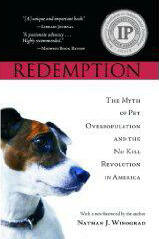 I became an animal welfare advocate in the summer of 2006 after we had our dog euthanized to prevent her from suffering. A series of events after her death led me to understand what was happening in my local animal shelter and shelters across the country that I just didn't know about before. I considered myself animal friendly at the time, but I was like most people: focused pretty much on what was on my personal radar and not really informed on issues which did not affect me personally in some way. One of the game changers for me as I began to educate myself on the subject of animal sheltering and the No Kill movement was a book by Nathan Winograd called "Redemption: The Myth of Pet Overpopulation and the No Kill Revolution in America." I consider this book to be compulsory reading for any animal welfare advocate not only because it covers the No Kill equation which I promote, but also because it sets forth the very relevant history of how our animal sheltering system got into the mess it is today. I think it's entirely relevant to learn about Henry Bergh and the Asilomar Accords and the positions of large national animal welfare organizations on how animals are managed in America. My copy of the book is a mess. It is tabbed, highlighted and looks like a college textbook. Much of the text is in my head and is there to stay, including a quote which appears at the beginning of a chapter called "Co-Option." Ethics and honestly demand avoiding euphemisms. The challenge is not to do away with the troubling words "No Kill," and to white wash killing; rather the challenge is to do away with killing, which requires ceasing to pretend - to oneself and the public - that it amounts to anything else." When it comes to animal sheltering, I believe that ethics, honestly and transparency are key to reforming our broken sheltering system. Because so many in the shelter industry blame the public for the fact that animals die - all while expecting that very same public to adopt animals, volunteer and donate - I think that being completely honest with the public is the cornerstone to change. That means that we don't say animals are "euthanized" or "put down" or "put to sleep" when they were actually killed in spite of being healthy and treatable. I know exactly what the word euthanasia means and it is offensive to me to compare the heart wrenching decision to have our beloved dog euthanized after sustained seizures caused by cancer to the decision to end the life of a healthy dog who could have been (or perhaps was) someone's beloved companion. To kill a dog for space or convenience is just that: killing him or her. And we have to call it what it is in order to help the public understand not only how their money is being used, but how they can help our society reform the sheltering system with their support. I also believe it is deceptive and unethical to twist, distort, skew or co-opt the words "adoptable" and "unadoptable." A shelter animal is unadoptable if he or she is suffering or so irremediably ill that palliative care is not feasible and euthanasia is the only ethical choice to prevent suffering. An otherwise healthy shelter dog is unadoptable if he or she is genuinely a danger to the public and there is no sanctuary placement available for that dog. There is a continental divide between dogs who are genuinely dangerous and dogs who are simply scared, traumatized, under-socialized or not doing well in a shelter environment. Studies have shown that dogs don't behave in shelters the way they do outside of shelters or even just outside. The National Canine Research Council explains evaluation of dogs in shelters this way: "Shelter evaluations may tell us as much or more about the effect of the shelter as they do about the individual dogs. Shelters are noisy, alien environments, filled with strange smells, unfamiliar people, and dogs they may hear, but not see. We should not be surprised that some dogs. . . may behave differently when confined in a shelter, with its barrage of stressors that the dog cannot control, than they will in the safe, secure, predictable environment of a home, cared for by people with whom they are able to form positive attachments." As the concept of No Kill becomes more widely known and is increasingly on the public radar, some shelters have resorted to the deceptive task of pretending they are No Kill when they truly are not. No Kill means you do not kill healthy and treatable animals. No Kill does not mean that you label animals as unadoptable in some way in order to make statistics look better than they truly are or to somehow try to hide what is really destroying animals for space or convenience. It is easy for a shelter to call itself No Kill when it simply labels adoptable dogs as a public safety risk or it labels animals with treatable health conditions as having severe conditions or otherwise requiring "humane" euthanasia. And the problem with this practice is that it is incredibly hard to expose absent being physically present in the shelter or having access to detailed records for each animal destroyed.
On September 21, 2016, a healthy 1 year-old Boxer-mix named Jackson was destroyed at my local animal shelter. The shelter was very up front about it and went so far as to post about his death on their Facebook page. I was appalled not just that Jackson was dead, but that his demise was written about in such a way as to make the public think his death was unavoidable. The most offensive statement in the post about his death was this: "Jackson is finally at rest and away from the chaotic world we live in now." No. Jackson is dead because the shelter failed to engage in adequate rescue liaison, failed to keep him from developing shelter stress through adequate behavior programs, failed to find a foster home for him, failed to market him adequately to the public and failed to fully embrace no kill programs which serve to limit the number of animals in the shelter at any given time. The report from the shelter which sets forth data on dogs destroyed in September makes it hard to determine which one was Jackson. I'm pretty sure he is listed as a 2 ½ year old pit bull type dog destroyed for severe behavioral issues. And I'm very sure he was killed because it was just easier than keeping him alive. If you are told your shelter is No Kill, ask questions to find out what that really means. It may just mean that the words adoptable and unadoptable have been co-opted to the point where they no longer mean what you think they mean. And it means that if your dog or cat ended up in the shelter for some reason, he or she could easily be labeled something they are not and destroyed for no good reason at all.
0 Comments
 I blogged a few months back about the Top Six Greatest Products for Dogs (and the People Who Care for Them). Since the time I wrote that article, I have found a superior canine safety harness which is made by a company named Sleepypod and which has the highest crash test ratings of any harness by the Center for Pet Safety. I plan to use this type of harness in the future because it is the only harness which received acceptable crash test ratings. Today I’m sharing some ideas related to holiday gifts for animal lovers. I do so with complete respect for every religion, knowing that everyone has their own traditions and beliefs. I have repeated some of my original recommendations because they make great holiday gifts. These ideas are in no particular order. The One Size Fits All Gift: A Charitable Donation. I’m not sure exactly when it started, but for years my siblings and I have not sent gifts for birthdays or for holidays. We donate instead. Making a charitable donation to an animal-oriented nonprofit on behalf of someone you love is not only quick, but it really is a win-win-win. You are gifting the donation in honor of a person you care about, you are helping a nonprofit group which really needs every dollar it can get and you are helping animals in need. I do recommend that you donate to an organization which is important to the person in whose name you are donating, keeping your donations either local or limited to a national organization which functions consistent with your values. Many large animal welfare organizations use the vast majority of donations for salaries, marketing and legal fees. If you want to make sure your money will be used in ways of which you approve, do a little homework or ask your family member or friend if they have a preference. 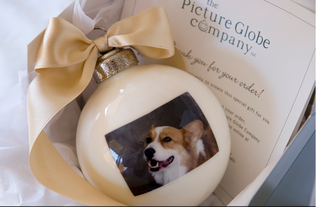 Picture Globes. Years ago after Snakey passed away, a dear friend of mine sent me a Picture Globe and it took my breath away. The Picture Globe Company is a family-owned business based in Everett, Washington, which creates beautiful keepsake ornaments in glass. You order a globe and are then prompted to provide an image and the wording you would like on your globe. Orders take 2 to 3 weeks to process and the deadline for holiday orders this year is December 1st. Since the time we got our first Picture Globe as a gift, we have ordered many more to honor those we have lost and my most recent order was for a Picture Globe of our beloved dog, Aspy. These globes are the focal points of our holiday decorating as we celebrate our blessings while honoring those who no longer walk our life path with us. If you’re looking for a holiday item for a friend or family member that will become a cherished possession and last for years, you truly cannot go wrong with a Picture Globe. The customer service provided by this family business is truly second to none and you will probably wish you had heard about The Picture Globe Company years ago. Rescue Chocolate. Good chocolate which supports a nonprofit group. Need I say more? Rescue Chocolate is a company based on Brooklyn, New York which handcrafts a variety of vegan chocolates with all proceeds going to charity. The designated nonprofit for the rest of 2016 is the No Kill Advocacy Center, an organization near and dear to my heart. The website for Rescue Chocolate explains the names of the flavors and why they are important: • Peanut Butter Pit Bull (countering the negative public image of the pit bull-type dogs) • Pick Me! Pepper (highlighting the advantages of choosing pets from animal shelters instead of breeders or pet stores) • Foster-iffic Peppermint (highlighting the need for people to provide foster care for shelter animals as they await their forever homes) • The Fix (highlighting the importance of spay and neuter) • Mission Feral Fig (highlighting the humane solution for feral cats, TNR) • Fakin' Bacon (a salute to farm animal sanctuaries and compassionate gourmands) • Forever Mocha (highlighting ways to help people make and honor a lifetime commitment to their pets) 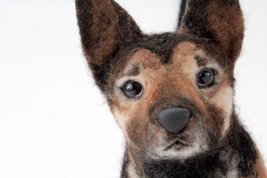 Shelter Pups (and cats). Shelter Pups sells handmade dog and cat stuffed animals, both ready-made (so you can choose the animal to "rescue") or made for you using images of your beloved pet. I admit that I first looked into this company to have stuffed animals made from images of our own dogs, thinking it was just a specialty company. When I learned that the mission of this company is to raise awareness and help real shelter animals, well, I was hooked. I invite you to visit the Shelter Pups website to learn how this all started with a little girl named Theodora who wanted a stuffed toy which looked like the shelter dogs she loved and while working to help dogs at her local animal shelter. You can either "rescue" an animal and send it to your family member or friend or you can have a dog or cat hand made from images of a specific animal (as we did with images of Snakey and Aspy). 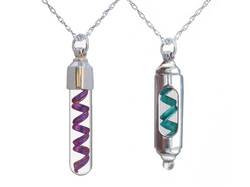 Perpetua DNA Life Jewels. I am not a big jewelry person. I wear one of a host of necklaces I own which have sentimental value to me. One carries a locket which holds images on my parents and our dogs. Another carries charms engraved with the names of our dogs. A few months ago, I heard about a special product you can have made using DNA, either human or animal and I was intrigued. I thought it might just be a rip-off or a scam. I mean, really, how can a company take DNA and use it to make jewelry or other items? I did some homework and you can now call me a believer. Perpetua Life Jewels was the inspired idea of a veterinarian who wanted to memorialize her lost dog using DNA. There are a host of products available on the website and there is a video which shows how the process works. Rich gifted me a Duet Life Jewel necklace which includes the DNA of both of our dogs. Aspy was still alive when he had it made. Now that Aspy is gone, the necklace is all the more precious to me. I cannot touch our dogs or see them, but I can feel closer to them every time I wear my DNA necklace, as I am today. You do have to provide DNA in order to have a jewel created and that may take a little sleuthing on your part, but the gift of a DNA jewel is one which will be cherished for years. Your jewel can be part of a pendant, necklace or bracelet. Based on the way they are constructed, the jewel could also easily be part of a key chain or just hang from the rear view mirror of your vehicle. 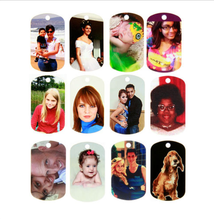 Photo Dog Tags. As an Army veteran, I spent years wearing "real" dog tags and I still have them as a keepsake. I also now have a number of photo dog tags which hang from the rear view mirror inside my car. Rich has his own set for his truck. The concept is simple: you provide a photograph or photographs of a beloved pet (living or remembered) and the images are put on a dog tag shaped piece of metal. This gift is a great idea for both men and women, as the dog tag can either be used on a chain or a key chain. Technology has changed since I bought our first dog tags with images of Snake years ago and has changed for the better. The most recent photo tags I purchased of Aspy came from a company which does business in eBay as LGU Enterprises under the name of Samumari800. The company is based in the United States and also sells items on Etsy. There are a number of options when buying photo dog tags. I use this company because the process is very quick and efficient. You order, provide the image or images you want to use, are provided a proof to review so you can see what the finished product will look like and your dog tag is produced and shipped quickly. I have finished reworking my slide show about community cats and TNR in advance of National Feral Cat Day which is on Sunday, October 16th. My prior version from 2011 lacked some of the current terms of art we now use and it needed an upgrade. Thanks to Fisher for the music use. Thanks to Lisa, Chriss and others for the video clips and images. As I blogged about recently, my experiences with TNR (trap, neuter, return) are both personal from the colony I help manage and as a result of friends and contacts across the country who do TNR and have for years. Whenever I hear someone speaking out against TNR, I wonder if they actually care about cats. I’m confident from what I’ve read and from the research by Alley Cat Allies that TNR truly is the most humane method to reduce cat populations. And I am reminded of the cats we have helped as a result of TNR who may have suffered and died without our help, many of whom were social to people and were just lost or injured. Chloe, Abby, Romey, Dot, Ford, Locke, Hollis, Channing, Holton, Wynn, Larry, Sky.
A friend of mine in California who does TNR recently helped a male cat she named T.C. It took weeks to trap him and he was put into a foster home. It was later determined that T.C. was very sick and he ultimately could not survive his ailments. His foster mom, Nan, wrote this note about his passing and I hope you will take a minute to read it. And then you will think twice when someone says that free roaming cats should just be destroyed. If your cat was lost or went missing, you would want someone doing TNR to help him or her: It is with a heavy heart, deep sorrow, and much sadness, I bring the news that T.C. lost the fight for his life today - he passed away this morning in my arms. Though he was a fighter, "my trooper", after being neglected for so long, it was just too much for his frail body. I'm glad I was able to be here for him. I am going to miss his little smiling face, looking at me upside-down, as I would rub his full belly. Not many male cats will let you rub their belly without shredding your arm, he definitely was not a feral cat. My condolence lies in the fact that T.C. got to know what it felt like to have a full belly every day, along with a warm comfortable bed to sleep in without worrying about anything, and having someone doting on him, giving him all the love and affection he wanted. Getting to know him was priceless. Godspeed, T.C. I'm sorry you couldn't stay. But I'm thankful you were helped and loved and you received the best possible care in your last days. 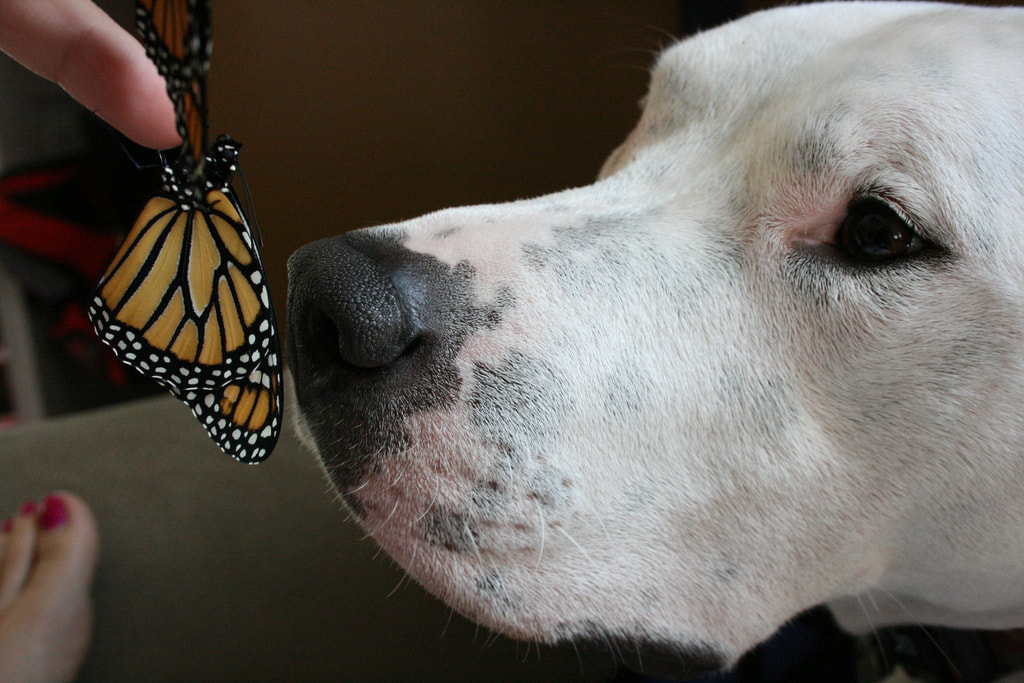 It is no secret to anyone who knows me that I don’t get along with the veterinarian who runs the municipal animal shelter in the city where I work. We come from different worlds and our history is just too rocky for us to recover. She likely doesn’t know it, but I became an animal welfare advocate as a result of a conversation I had with her in the summer of 2006. Her words led me to an epiphany about what happens to healthy and treatable animals in the shelter using our tax dollars. I got mad, I got smart and then I decided to speak out for the animals who cannot speak for themselves. We first met in person on January 22, 2009, after I wrote a letter to the newly elected mayor about no kill philosophies and he asked to meet to talk about the letter. The shelter director was outside the mayor’s office when I arrived for the meeting. She told me that she had read the copy of Nathan Winograd’s book about the no kill movement which I had sent to the mayor (“Redemption: They Myth of Pet Overpopulation and the No Kill Revolution in America") and that it upset her so badly that she almost quit her job. I was tempted at the time to offer to help her pack her things, but I bit my tongue and tried to play well with others. In August of 2009, when the shelter director and I were still on speaking terms (at least to a degree) she asked me to write a white paper about adoption of pit bull type dogs. She said she was having issues with the attitudes of some of her staff related to adopting out these dogs and she needed some help convincing city hall to help her overcome what I understood was a de facto pit bull ban. The city doesn’t have an actual breed ban, but any dog entering the shelter which looked even a little like a pit bull type dog was destroyed. I knew in my heart that she really didn’t care much about using a white paper to change her operation. Looking back, I think it was a way to keep me from being too critical of her operational choices while challenging me to give some proof or evidence that pit bull type dogs were worthy of redemption and should be spared. Because I felt like the paper would be of more use outside of my area than here, I began my research with the plan to make the paper of value to anyone, anywhere. Dog lovers, pit bull type dog advocates, opponents of Breed Discriminatory Legislation (BDL) or Breed Specific Legislation (BSL). I was not qualified to write a white paper. But I work in the legal field and I am familiar with how to do research and compile evidence, so I felt I could do a decent job of putting together something which may be of some value to someone. I finished my first version of “Forsaken No More: Reclaiming the Truth to Save Man’s Best Friend” in September of 2009 and I felt pretty good about it. I had learned a lot in the course of doing my research and I had connected with one of the foremost authorities on my topic, Karen Delise of the National Canine Research Council. I sent copies of my paper to the shelter director and shared it with contacts across the country. The original version was posted to the Animal Law Coalition website and is still there to this day. 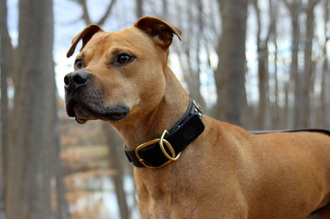 In early January of 2014, I was watching a local morning news program and heard the shelter director’s voice. Between the time I had finished my paper and that morning, a lot had happened in my life and in the community. The most relevant thing for the sake of this story is that I had formed a no kill advocacy coalition to take the topic of how our shelter runs to the public in order to get their support to stop the killing of healthy and treatable animals in our shelter. No Kill Huntsville had been rocking the community boat for change for a couple of years by then and people were starting to listen. The news segment was an interview of the shelter director to ask her opinion on the possibility of ours becoming a no kill community (a place where healthy and treatable pets are not destroyed for space). When she began talking about how many problems she was having adopting out pit bull type dogs, I got mad. From what I could deduce, nothing had changed in the way these dogs were handled and there had been no obvious public education programs developed to overcome stereotypes. I decided to channel that anger into a revised version of my research paper. The 2014 version of Forsaken No More is found at this link. Because some of my citation links are no longer valid, the research to which I cite is located here. The topic of how we treat pit bull type dogs in our country and in other countries continues to evolve with each passing month so it is unlikely that I will work to update the paper repeatedly. I stand by the content and I think it is as relevant today as it was when I did my rewrite two years ago. I had my draft reviewed by Karen Delise to seek her input and I am grateful that she took the time to help me again. Whether you are a dog lover, a rescuer, an animal welfare advocate, a public official or just someone who doesn’t like the idea that perfectly good dogs are destroyed using your tax dollars, you are welcome to read my paper and use it in any way which helps you. I am certainly not an authority on this topic. But I think if we are ever to bring an end to the destruction of healthy and treatable animals in places we call shelters, we need to educate ourselves enough to understand why they are being killed with our money and we need to see past the hype which leads to the destruction of dogs which have served us long and well as a culture. Healthy and treatable pit bull type dogs continue to be destroyed in the shelter in the city where I work for space, for convenience and because the public has been bamboozled into believing the hype about these dogs which is not based in fact. I am powerless to do anything to stop that in my shelter or in yours. But perhaps we can save these dogs by making ourselves smarter and then making better choices so that their destruction is not some foregone conclusion. And we can work to fight junk legislation around the globe which spreads like a cancer and which does nothing to keep the public safe. (images courtesy of Melissa Rickman and Joshua Grenell)
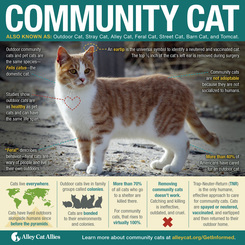 click image to view .pdf click image to view .pdf National Feral Cat Day is on Sunday, October 16, 2016. As we approach this national day of awareness and education, I wanted to blog about the topic of community cats. I know I tend to talk about dogs more than cats on my website simply due to my volunteer work for certain nonprofit organizations which help dogs, but the issue of community cats is one I deal with on a regular basis because of the managed colony of community cats where I work. What is a Community Cat? A community cat is a cat who lives outside. These cats are also known of as outdoor cats, stray cats, alley cats, feral cats, street cats, barn cats and tomcats. They originate from former domestic cats who were lost or abandoned and then learned to live outdoors or in environments involving little human contact, such as warehouses, factories or abandoned buildings. Outdoor cats live in family groups called colonies. They are bonded to their environments due to the resources they find there: food, water and shelter. They are also bonded to each other for companionship and protection. What is a Feral Cat? A feral cat is a community cat but not all community cats are feral. A feral cat is one who is not socialized to humans. You can often tell the difference between feral cat and a cat who is social to humans through body language and behavior. A stray cat which may be social to people will often approach people, houses, porches and cars. A feral cat will not approach people and will seek out places to hide. A stray cat might walk or move much like a house cat with his or her tail in the air. A feral cat may crawl, crouch or stay low to the ground and protect his or her body with the tail. A stray cat may look at you, blink, make eye contact or even vocalize near you. A feral cat is unlikely to make eye contact or vocalize at all. 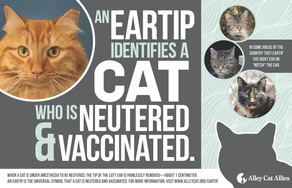 click image to view .pdf click image to view .pdf Shouldn’t We Just Destroy These Cats? Some people would argue that community cats should be destroyed in order to remove them from the ecosystem or to prevent them from destroying birds. Free-roaming cats live in certain areas because of the resources available there. If you destroy the cats, more will simply take their place. This is called “the vacuum effect.” The arguments that feral cats destroy wildlife or spread rabies are myths. Habitat destruction and pesticides are the main cause of diminishing wildlife. According to Alley Cat Allies, the last confirmed cat to human transmission of rabies occurred more than 40 years ago. Outdoor cats are as healthy and pet cats and can have the same life span. In stark contrast, more than 70% of cats who end up in shelters nationally are destroyed. When it comes to community cats, that number rises to 100% in all but the most progressive communities. A national survey conducted by Alley Cat Allies showed that more than 80% of Americans believe that leaving a stray cat outside to live out his or her life is more humane than having the cat caught and killed. More than 40% of Americans have cared for an outdoor cat; it is clear that Americans want compassionate approaches for cats. How Do We Help These Cats? Studies have shown that Trap-Neuter-Return - TNR - is the only method proven to be humane and effective at controlling community cat population growth. Using this technique, all the cats in a colony are trapped, neutered (or spayed), vaccinated and then returned to their territory where caretakers provide them with regular food and shelter. It is customary to “ear tip” the left ear of the cat during surgery so the cat be easily identified as a cat who has been sterilized and vaccinated. Young kittens and friendly adults trapped in TNR are placed in foster care and eventually adopted out to good homes. TNR stabilizes the size of the colony by eliminating new litters. The nuisance behavior often associated with feral cats is also dramatically reduced, including the yowling and fighting that come with mating activity and the odor of un-neutered males spraying to mark their territory. What Are Some of the Indirect Benefits of TNR? In addition to helping cats who live outside, another significant advantage to TNR is that it lessens the number of kittens and cats flowing into local shelters. It is more humane and cost-effective to use TNR to control cat populations so that tax-dollars are not needlessly spent on what is sometimes referred to as a "catch and kill" method of handling free-roaming cats. Another indirect benefit of TNR is what cats who are social to humans, but who are just lost, scared or injured, are helped in the process. A cat who is outside and who needs help is often hard to distinguish from a feral cat. It is only in the process of doing TNR that rescuers and people who help cat colonies are able to help cats who require veterinary care or who are completely social to humans and just need a new home. Why Would Anyone Oppose TNR? The topic of feral cats is one which is the subject of a lot of controversy nationally. In spite of numerous studies to the contrary, there are those who are simply convinced that free roaming cats are a danger to wildlife, they harm the environment and they should just be destroyed. I simply could not agree more. I will leave it up to organizations like Alley Cat Allies to fend off the blows of the cat haters with science. For me, this is just a simple issue: TNR works. 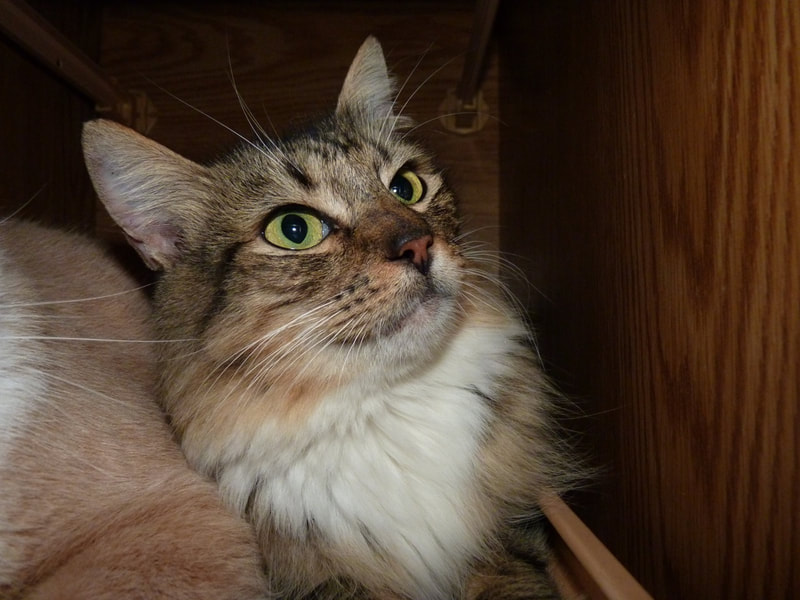 My Personal TNR Story. I work at an office building in a centrally located area of a fairly large city, next to the major thoroughfare which runs through the city from north to south. We have been doing TNR of community cats for years with the help of a local rescue group called Forgotten Felines. I know for a fact that in the years we have been doing TNR, 90% of the cats we have helped were actually social to people and were not feral at all. Many of them acted unsocial at first, but once they were trapped and helped, we found that they actually seemed relieved to be safe and in the company of people. Yes, some of our cats really are feral and they live outside in our managed colony, moving between parcels primarily through the street drainage system. They are fed once a day 365 days a year, we monitor their health by observing them and I dare to say they have it pretty good between nutritious food and some cat houses which are actually insulated with spray foam. For those who oppose TNR, saying it is cruel or not effective, I say this: if you really care about the welfare of cats, you simply cannot discount the fact that TNR reduces cat populations, keeps kittens from being born and helps pet cats who are social to people. We have helped cats who were so thin they were on death’s doorstep. We had one cat with multiple broken bones in her front left arm that had to be treated by an orthopedic surgeon. Still other cats have had infections which gone untreated may have killed them. But for us doing TNR and helping the cats who make their way to one of our feeding stations, they would have died and in many cases their death would be slow and painful. And but for us doing TNR and helping cats here, they would likely have ended up in our municipal animal shelter where they would have been destroyed using tax dollars. If your cat was lost or went missing, you would want someone doing TNR to help him or her. |
AuthorI am an animal welfare advocate. My goal is to help people understand some basic issues related to companion animals in America. Awareness leads to education leads to action leads to change. Archives
July 2024
Categories
All
image courtesy of Terrah Johnson
|

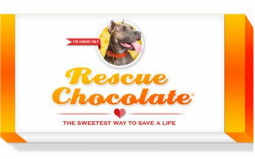
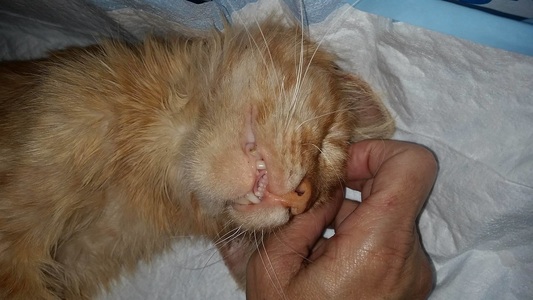
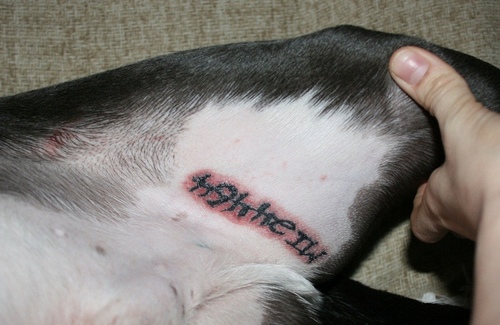
 RSS Feed
RSS Feed